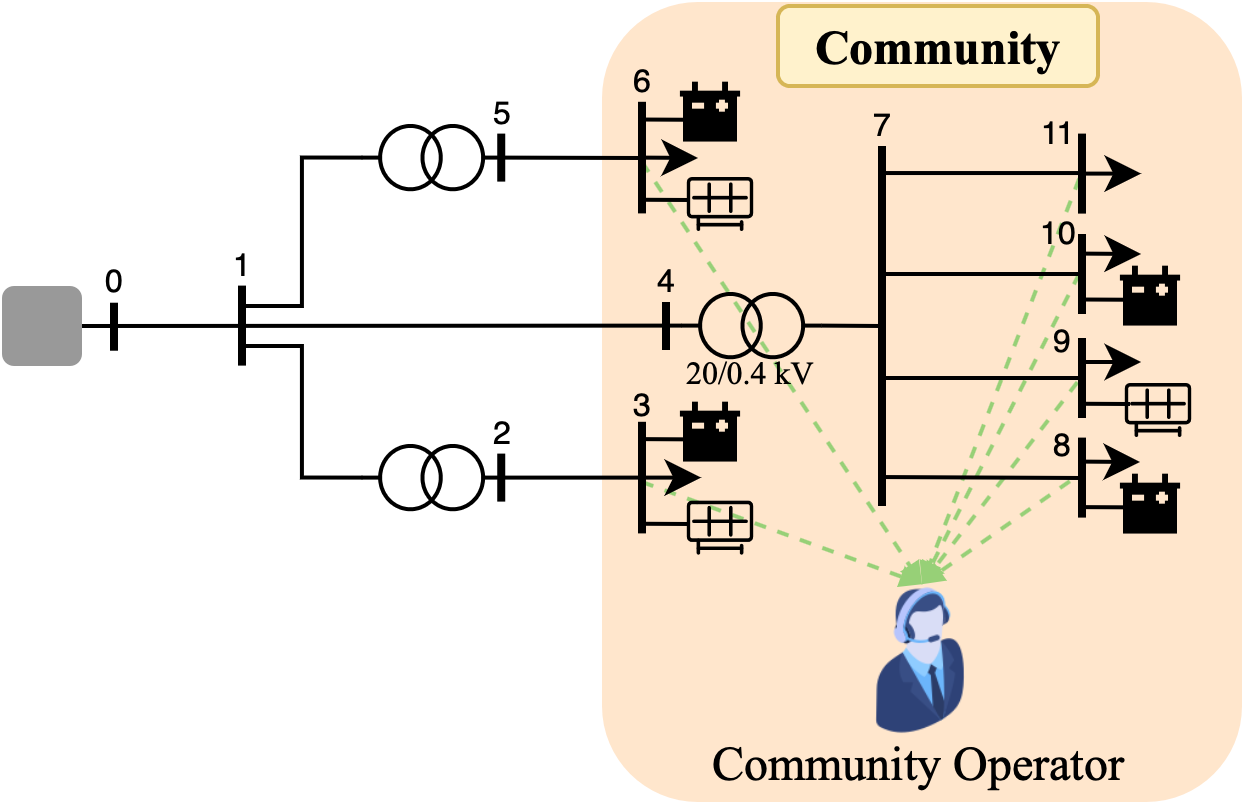
__author__ = "Andy Putratama"
__website__ = "andyptr.github.io"
This study focuses on local energy market, specifically energy community. Energy community has been discussed in the Clean Energy Package by the European Commission in 2016.
Energy community is an emerging market. The idea of energy community is to enable prosumers to prosumers energy trading. Specifically, energy community allows prosumers connected in the same LV grid to form a community, where they can trade and exchange their local energy production to each other. Figure below illustrates an energy community.

There is a community operator, who has to role to manage all operation and communication in the commmunity
Several main advantages are:
Unfortunately, the detailed formulation of the developed community market strategy is not presented in this notebook, because the work is still in the process of publication.
In this notebook, the effectiveness of the proposed community market strategy is presented and compared with a base scenario.
We use IEEE European LV feeder for the test case in this study, as shown below.
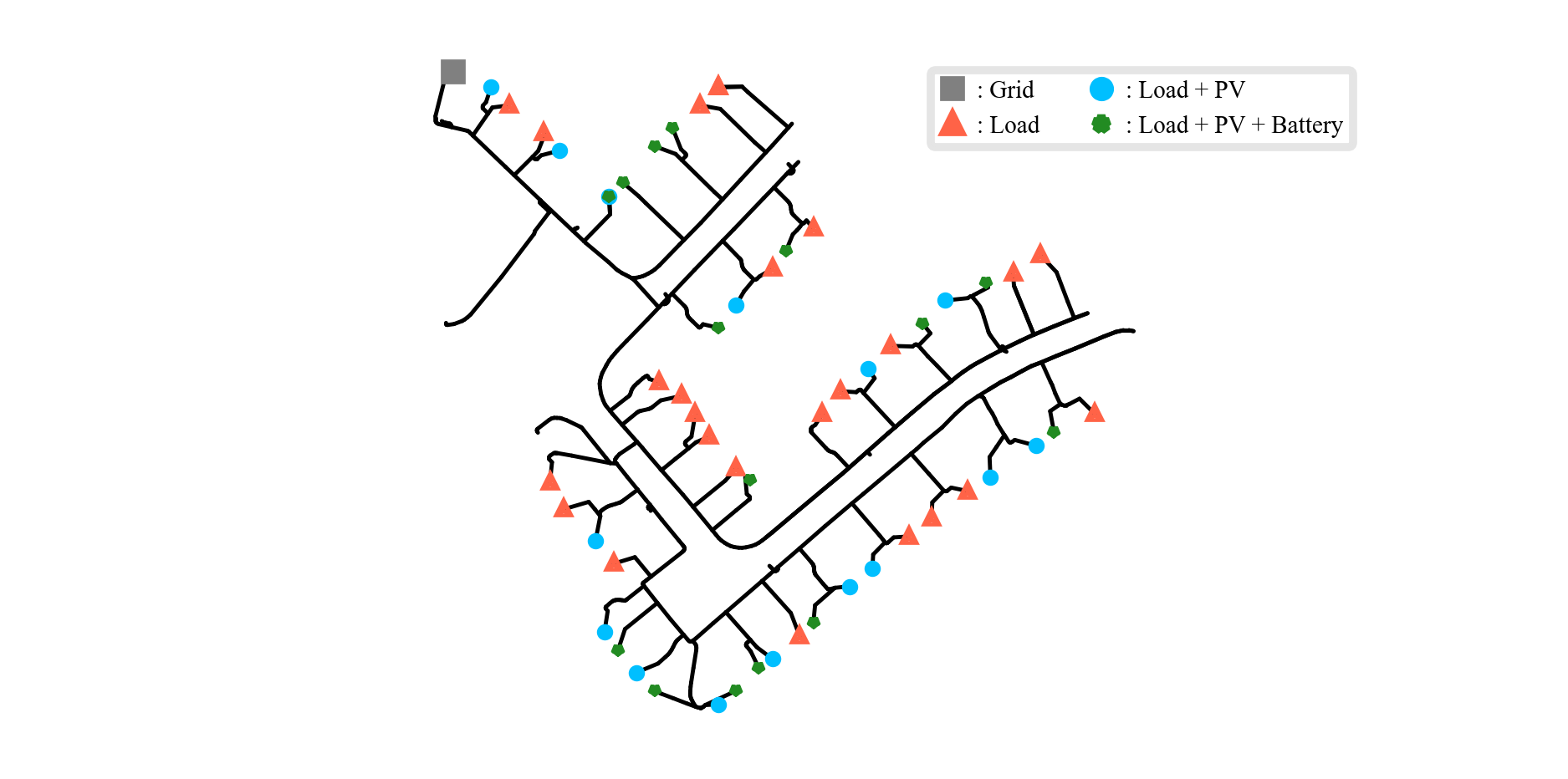
Basically, the base scenario is today's scenario, where there is no community and prosumers/households buy/sell electricity through conventional electricity retailer.
In the proposed community market, prosumers can trade their local production to the community in addition to the traditional electricity retailer.
Furthermore, the proposed strategy integrates:
Now, our aim is to observe the impact of the proposed community market and compare it with the base scenario. The considered time horizon in the simulations is one month and the considered timestep is 15 minutes.
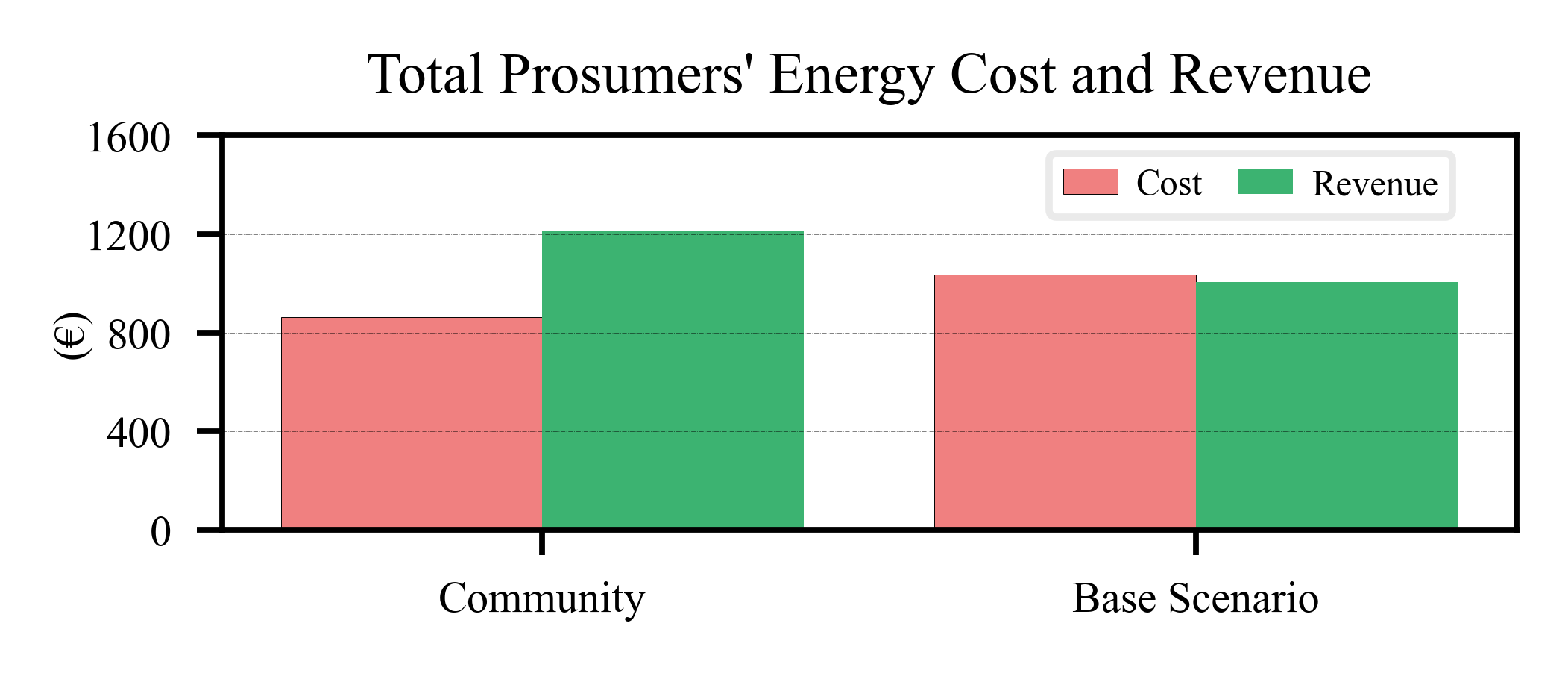
The figure above shows the total cost incurred and revenue earned by all prosumers over one month both in the base scenario and in the proposed community market.
We can see the proposed community market achieves lower energy cost and higher revenue, which due to the attractive buying and selling prices in the community.
Moreover, we can see individual cost reduction below:
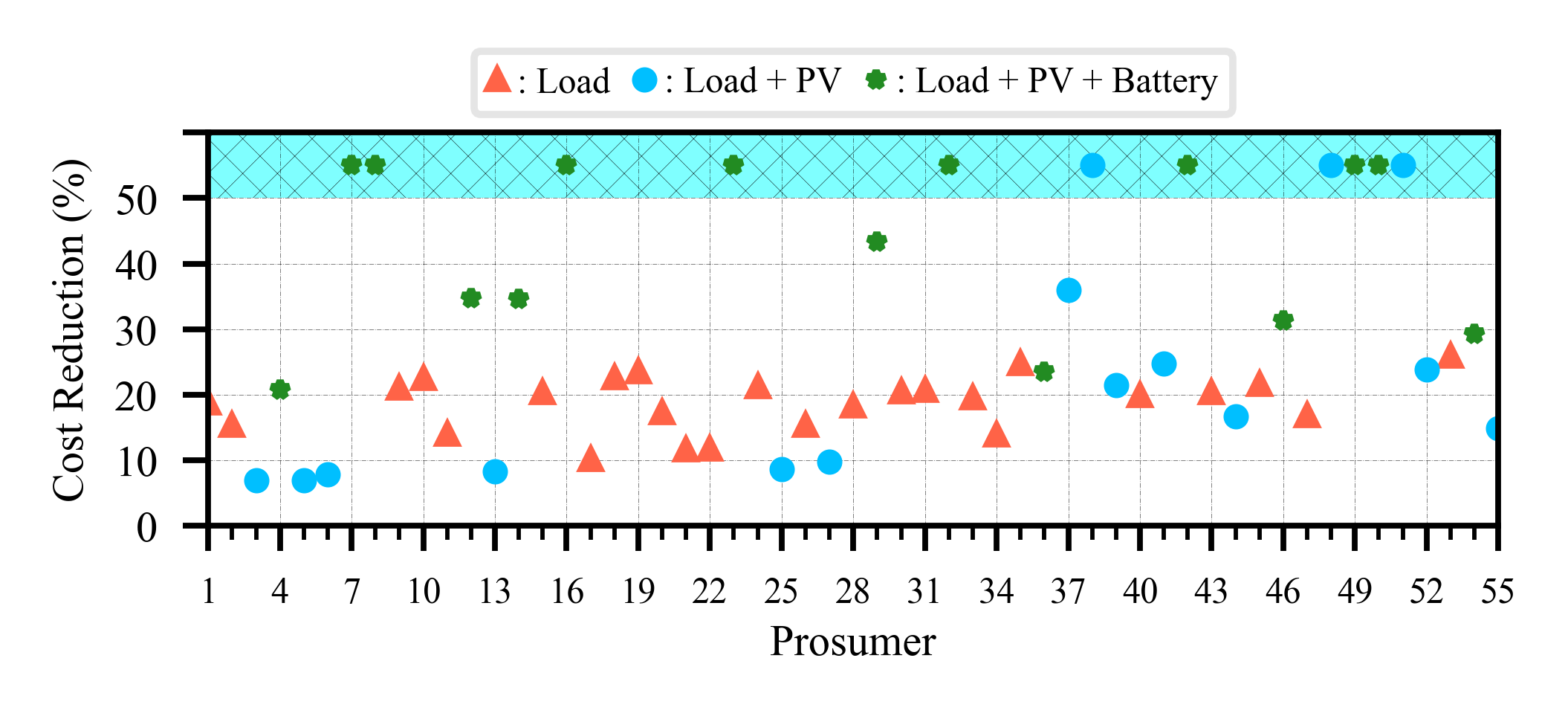
We can see that in overall, prosumers earn around 20% of cost reduction with the proposed community market. Moreover, the prosumers in the blue area earn money at the end of the month (because their total production > total consumption.
The following figure compares the total prosumers' energy imported and exported in both scenarios:
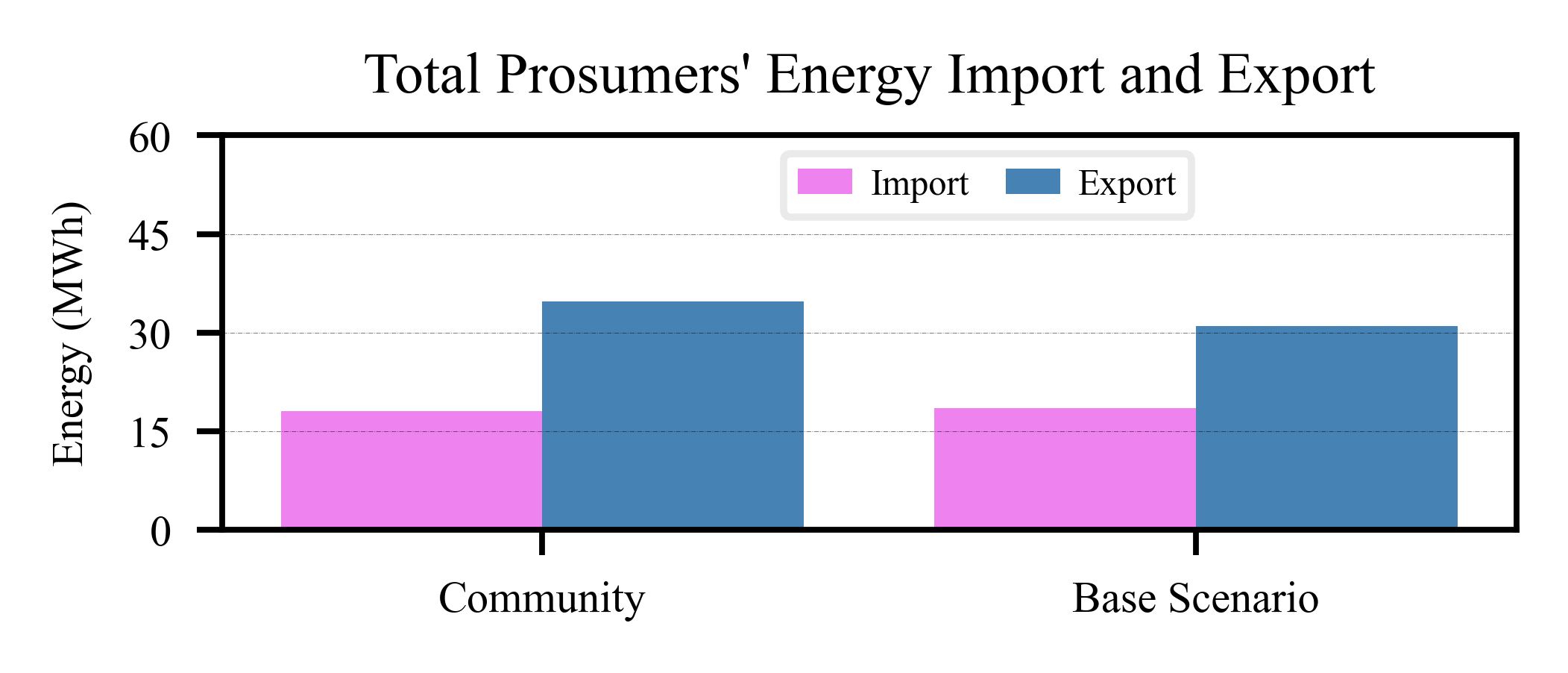
We can see that the proposed community market allows prosumers to export more energy, resulting to the increase of collective self-consumption. In the proposed market strategy, the prosumers actively coordinate with the CM. With this coordination, the operation of the grid then can be more optimized.
Let's see now how much the energy is allocated in the proposed community market. We can take an example of one particular day (day 1):
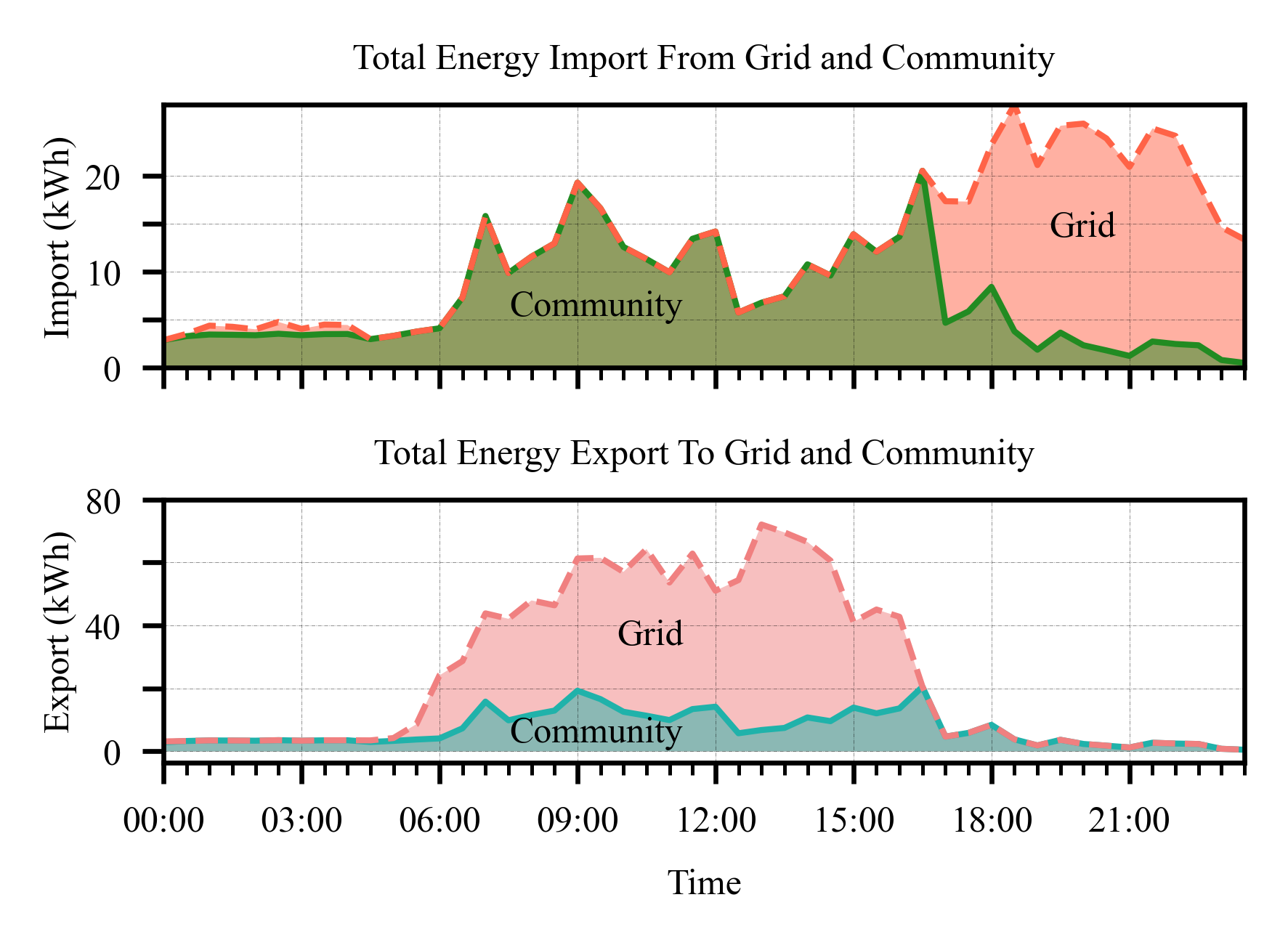
The figure above shows (a) the energy imported from the community and the grid, and (b) the energy exported to the community and the grid.
The prosumers can trade more energy in the community during daylight, because it is the period where there are a lot of PV production. At night, prosumers mostly trade their energy with the grid, because there is only few amounts of energy available in the community, which only comes from the battery.
Furthermore, in the figure (b) we can see there are a lot of excess energy that are exported/sold to the grid. These energy cannot be traded in the community because the prosumers (in total) cannot consume that massive amount energy. These massive excess of energy can lead to voltage increase in the system and even worse overvoltage. With the proposed community market however, this overvoltage can be mitigated, as illustrated below.
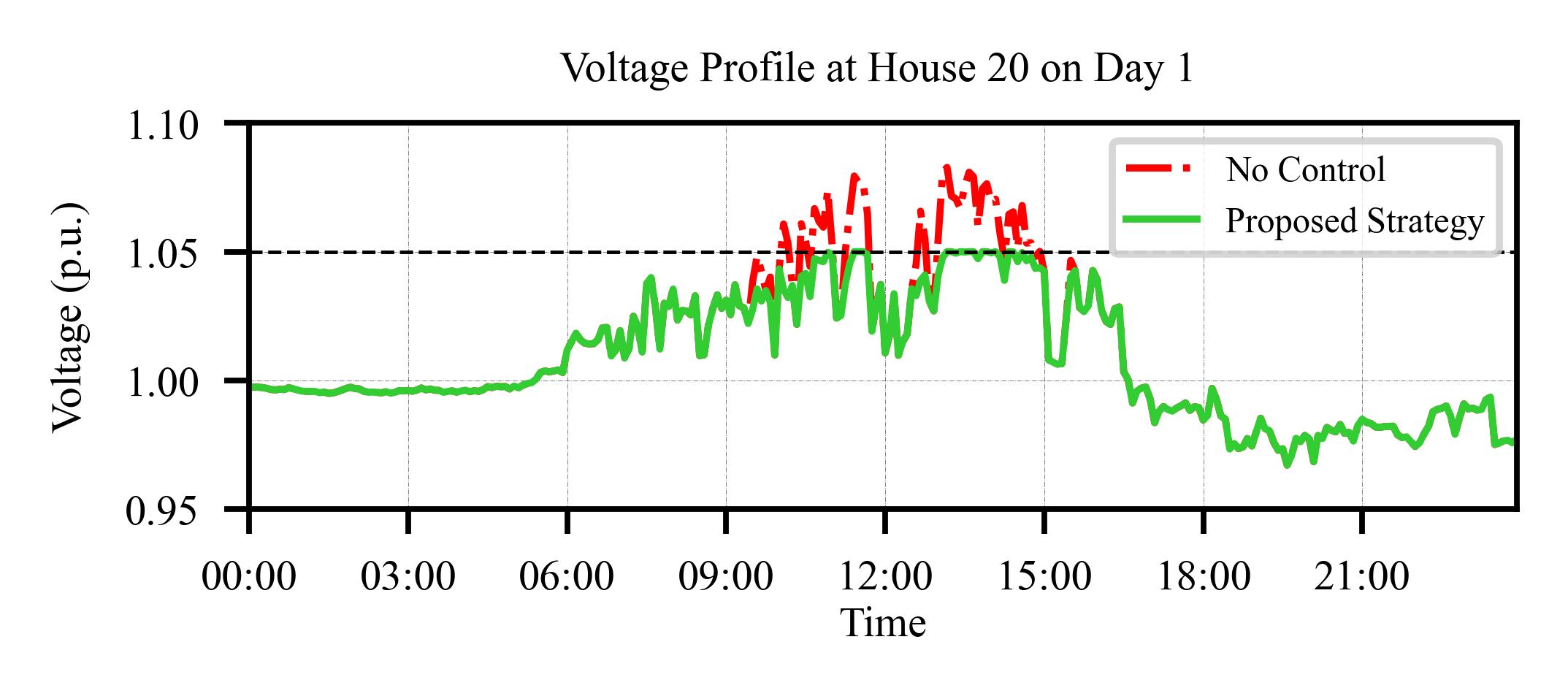
We can see that if we dont have any control, the voltage at house 20 can go beyond the limit. Thanks to our algorithm, the voltage can be maintained below the upper voltage limit.